As autumn was looming and the days were getting shorter and shorter in northern Europe, I’d thought to myself about making a trip to the “Sun Coast” in southern Spain, as commonly done by many northern Europeans low on vitamin D. But instead of taking a flight, as most do, I wanted to challenge myself by taking the train. In this article, you can read how this adventure went. 🚂
I started this trip in the middle of November and headed back to Berlin at the beginning of December 2021. Planned were three effective days of travel towards Málaga, and three additional days to get back again. I also set aside days for enjoying some places along the way. Arriving in the Málaga area, I did two weeks of remote work before heading back again. To have some more flexibility with the train tickets, I bought an Interrail pass for the month of travel. More about the train bookings at the end of this article. The trip required quite a bit of research, and therefore, I here share some of my experiences that can be useful to others interested in making a similar trip.
Berlin ↔ Frankfurt
As Berlin and Frankfurt are major cities in Germany, this route is operated almost more than once an hour. As I arrived at Frankfurt central station, I was instantly reminded that Frankfurt is a large travel hub: in the sky, I could see four airplanes lining up for landing.
I passed through Frankfurt both on the way to and from Málaga. The first time I did not stop in Frankfurt but continued to Mannheim and Heidelberg, where I have previously lived and met a few friends of mine. On the way back, I made a quick visit to the Christmas market in Frankfurt.
The good thing in Germany is that, with Interrail, no seat reservation is required for the Inter-city Express (ICE) trains.
Frankfurt ↔ Lyon → Marseille
Continuing south, I took a direct train to Marseille. The train passes through Lyon that I wanted to visit, but I instead planned a visit to Lyon on the way back. The route Frankfurt → Marseille is operated by a French TGV train once a day in both directions. I found it very cool that one can travel directly from Germany to the Mediterranean Sea, thus I went the whole way to Marseille.
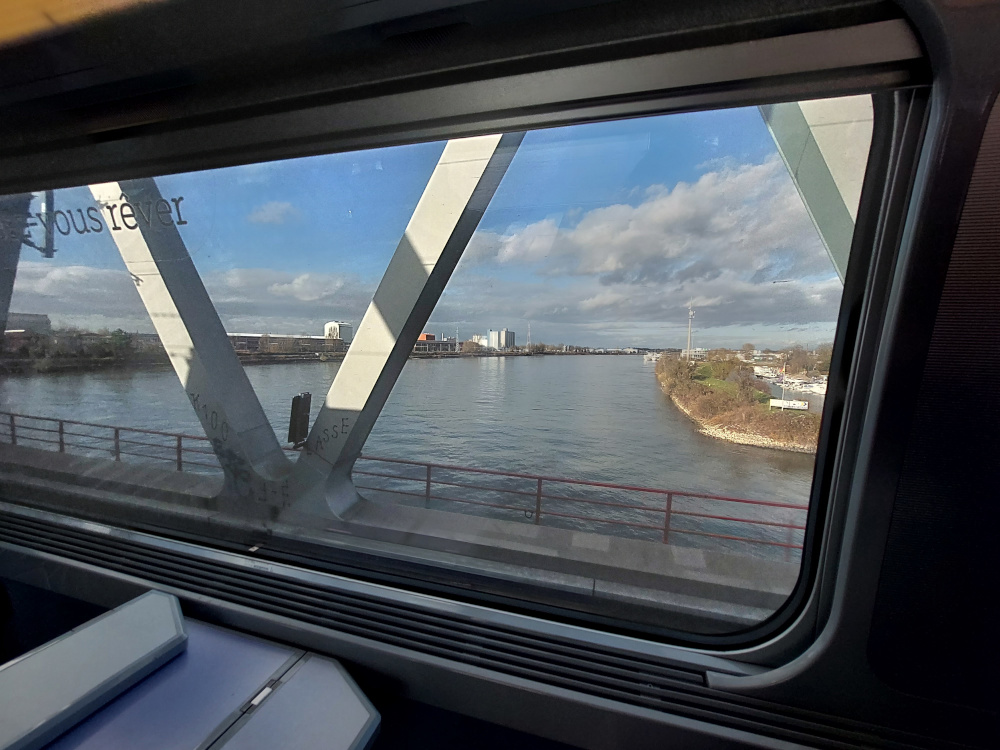
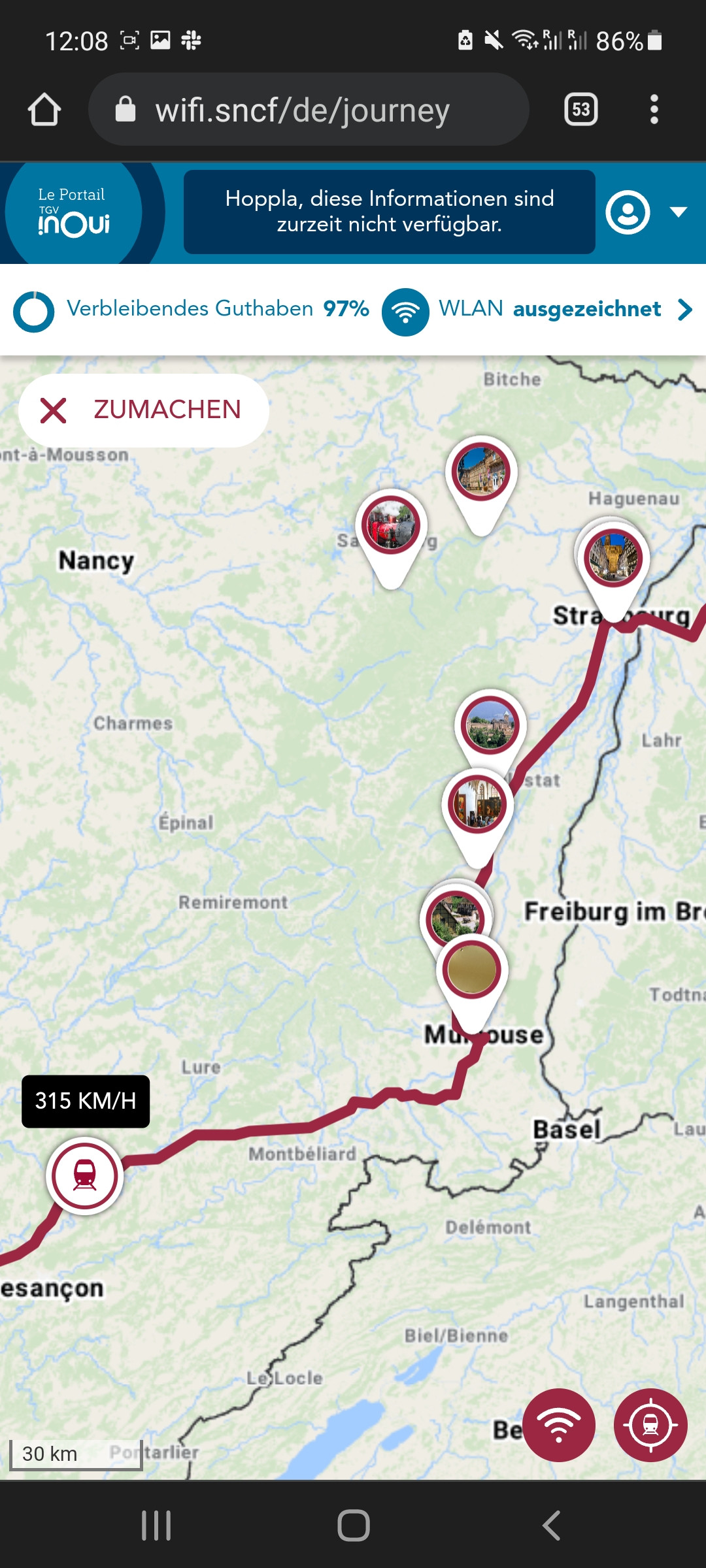
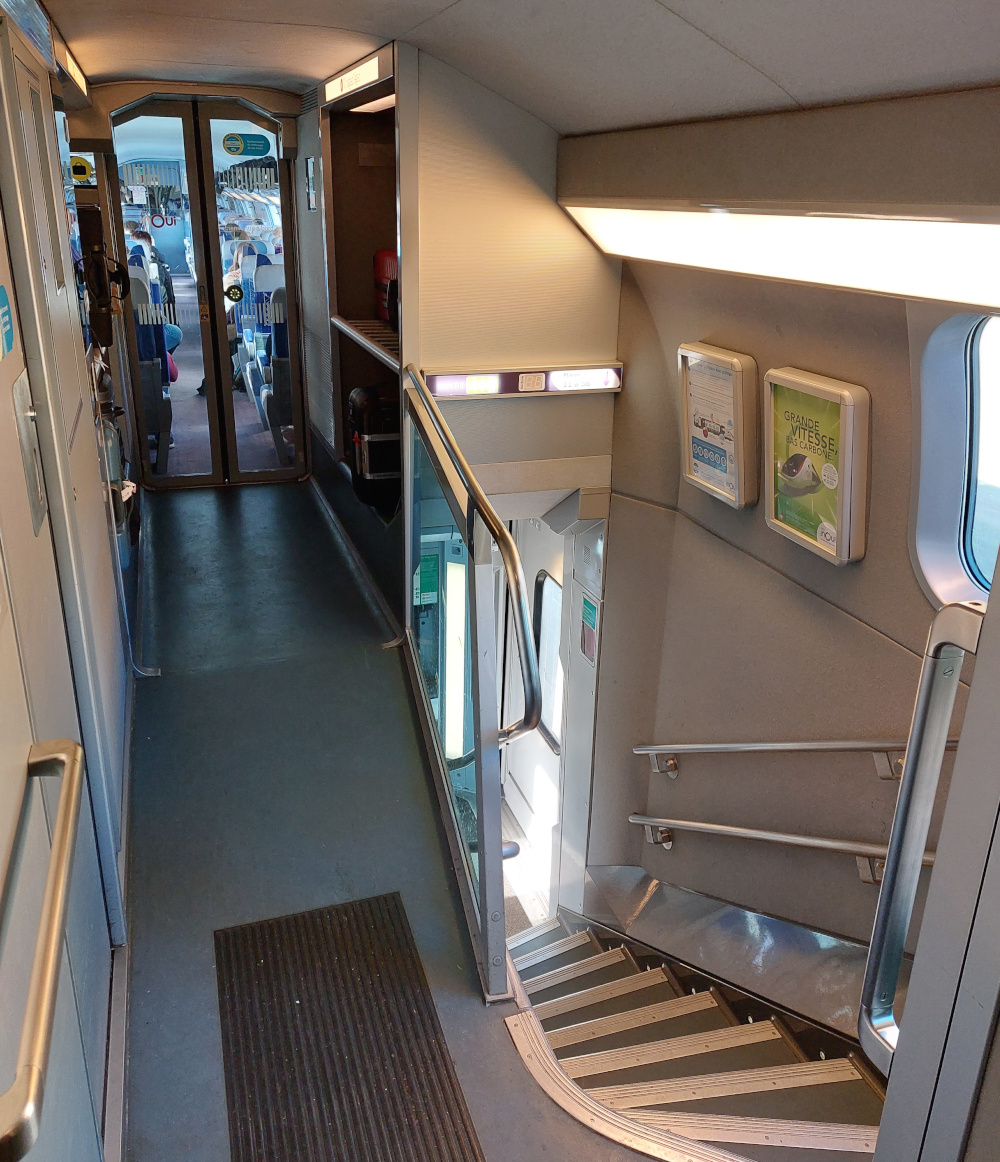
The train route goes along the French-German border region and passes cities like Karlsruhe (home of the German Constitutional Court) and Strasbourg. On the way to the French south coast, I saw many mountains on the horizon, as the train goes in the valley next to the Alps. Although, as I traveled in November, the darkness slowly crept in making it hard to see much.
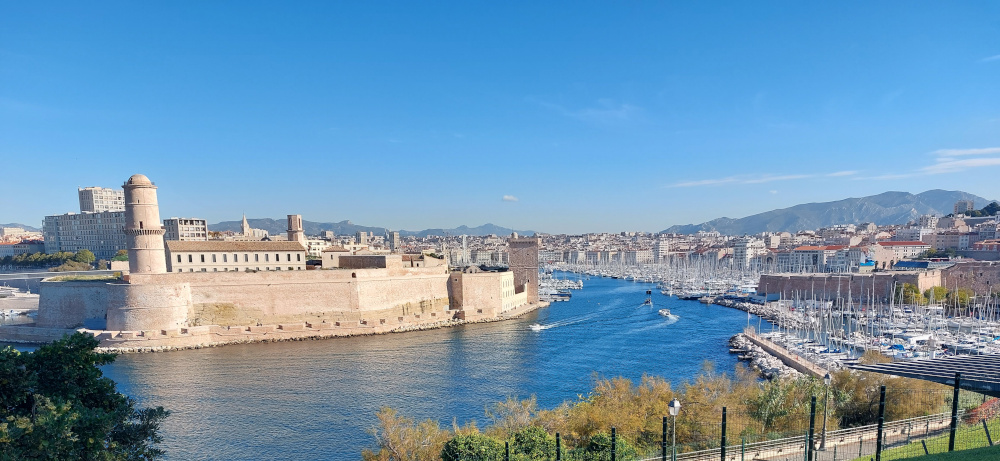
Arriving in Marseille, I was directly reminded of the Mediterranean weather. The temperature was mild and no clouds were to be seen. A major contrast to the weather in Germany. If I were just looking for some sun in the winter season, I think the southern coast of France would already be enough for me.
The Provence region, where Marseille is located, has lots of tourist opportunities. I stayed there for three days, but one could easily fill up a week. I visited the neighboring cities Avignon, where the Pope lived in the 14th century, and Arles, known for its Roman arena. Compared to Marseille, both of these places are much more touristy. As I visited in November, many restaurants were closed, so the streets were maybe not as cozy as they usually are in summer.
Marseille → Barcelona
This route I took with the bus BlaBlaBus at night, which took a little over 7 hours. Sleeping on busses usually works okay for me, if I have had a good night's sleep on the day before. The bus arrived in Barcelona at 6 a.m. After some coffee, I started my sightseeing in Barcelona right away.
Although sleeping on a night bus is time-efficient and saves one day of additional accommodation, you cannot easily brush your teeth or change clothes. It was also cold and not so comfortable to wait outside for the bus. If I travel this route by bus again, I would likely opt for one of the buses during the daytime, alternatively taking the train from Montpellier or Nîmes and using an additional travel day with Interrail.
Barcelona → Lyon
When heading home, instead of taking the bus again, I took the train Barcelona → Lyon that goes daily at 8 a.m. There's also a train going directly to Paris that I considered. From Paris, you can then go to Cologne. But I opted for Lyon as I found the connections to Berlin better.
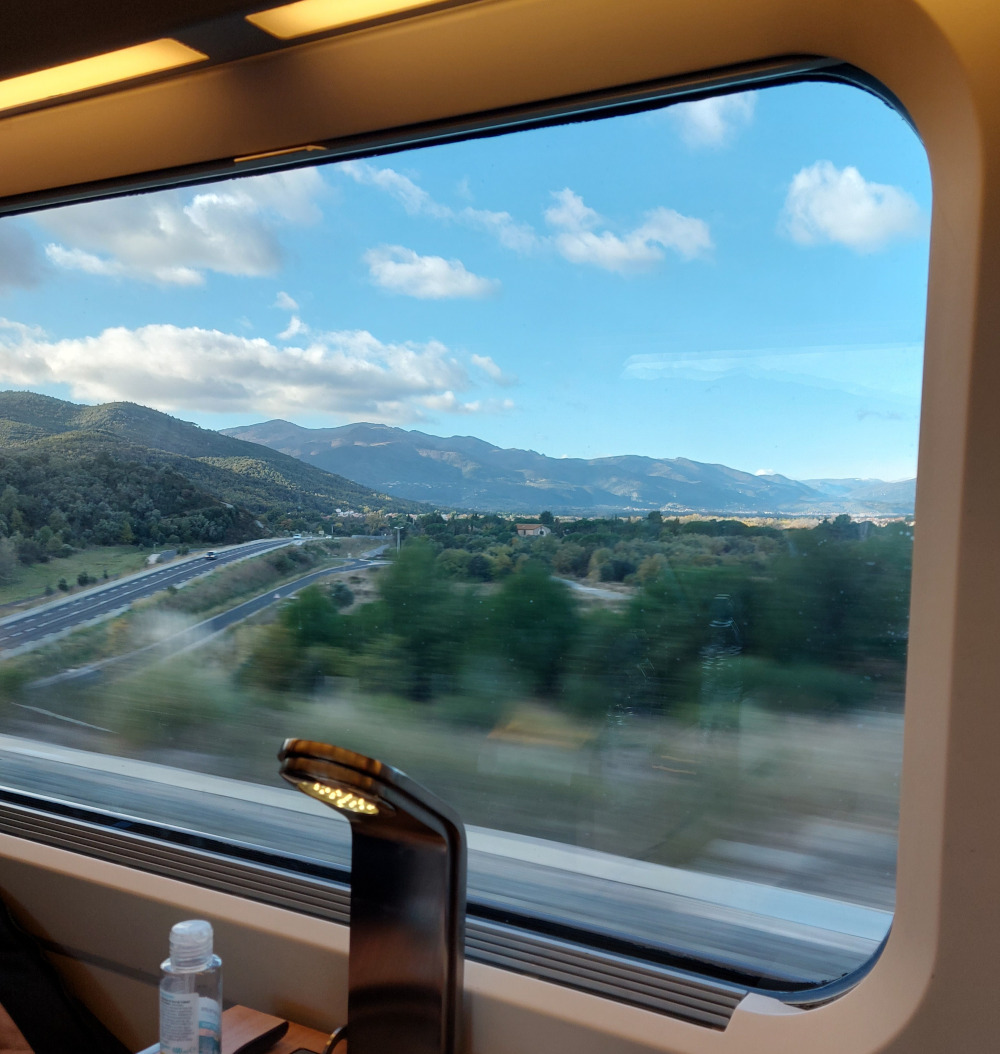
This route offered a couple of good views of the Pyrenees and closely followed the coast of the Mediterranean Sea. On some parts, the tracks almost went "into" the sea. It is operated by a Spanish Renfe AVE high-speed train, but between the Pyrenees and Montpellier, the train did go relatively slow, which was not a bad thing considering the nice views.
Barcelona ↔ Málaga
Now just the last stretch to the Spanish south coast remained. After a day in Barcelona, I took the direct route to Málaga that goes once a day. There are several trains a day going between Barcelona → Madrid, and Madrid → Málaga, but I found it less stressful to take a direct train and not be afraid of missing the connecting train. With my Interrail pass, it also meant that I only needed one seat reservation costing 10 € for the entire route.
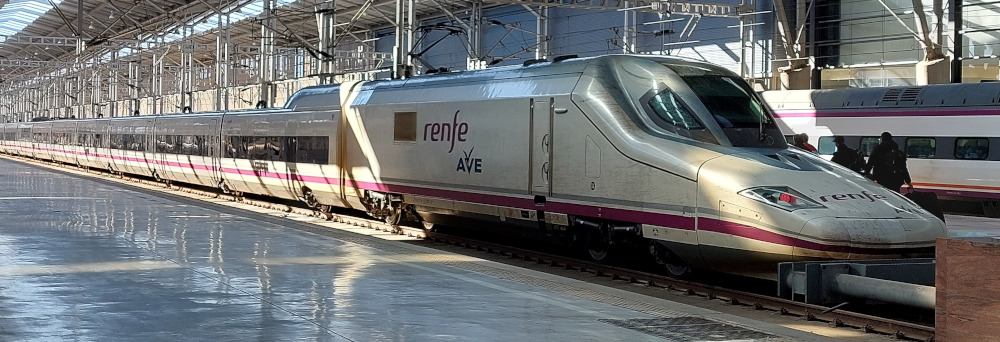
Traveling on high-speed trains in Spain is a little like flying. Before boarding the train, you have to show your ticket, and your luggage is X-rayed for dangerous items. Like on planes, the staff come with a wagon and offer you to buy coffee. It is probably best to arrive about 30 mins before the train departs to have enough time to pass through the security screening, although for me, it took just about a minute to pass it. Liquids are fine to bring, but make sure not to carry knives. Compared to an airport security screening, it was much less restrictive.
Annoyingly, it is not possible to reserve seats online for Spanish trains, when traveling with an Interrail pass. Instead, you need a paper ticket printed from a train station. I was able to get it printed by the travel center at Berlin central station, although the German staff was not very used to making seat reservations on Spanish trains. My understanding is that these tickets can be printed at major European train stations. Swedish train stations don’t seem to be connected to the same booking system but are bookable in Sweden with help from Centralens resebutik.
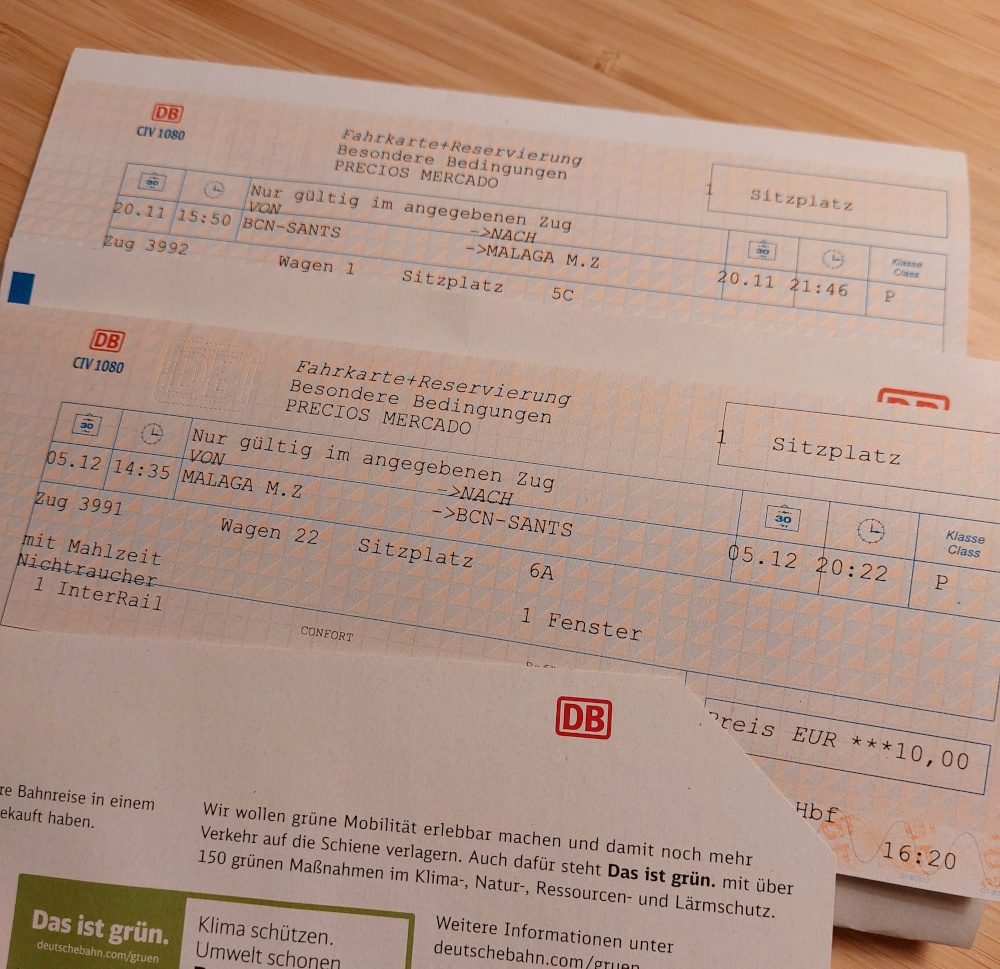
In total, I was satisfied with traveling on the Spanish high-speed railways, even if it took some time for me to learn how seat reservations with Interrail passes are possible. The trains were comfortable, and I got to gaze at Spanish landscapes.
Travel Costs
I paid 251 € for the Interrail Global Pass Youth with 7 travel days. You can use these days spread out within one month. It would have been enough with 5 days though, as the local trains that I took from Marseille to explore the Provence region would have been cheaper to buy directly.
Interrail seat reservations. On high-speed trains, you often need to make a seat reservation and pay a small fee. The prices in the online portal were not that correct, Therefore, I here list what I paid:
| Connection | Governmental train service | Cost for seat reservation | How to reserve a seat |
|---|---|---|---|
| Berlin ↔ Frankfurt | DB ICE | N/A | Not needed |
| Frankfurt ↔ Lyon/Marseille | SNCF TGV | 15 € | interrail.eu |
| Lyon ↔ Barcelona | Renfe AVE | 19 € | Major European train stations. I booked from Berlin central station. |
| Barcelona ↔ Málaga | Renfe AVE | 10 € (20 € if changing trains in Madrid) |
As I stayed in the Frankfurt area for a few days before heading to Marseille, I bought this ticket separately from my Interrail pass for 18 €.
The benefit of an Interrail pass is that you can make your seat reservations quite late without an increase in ticket prices. I booked most of my reservations around 2 weeks in advance and seats were still available on most of the trains. Only on Fridays and Sundays afternoon were tickets unavailable. In high season, this is probably a different story.
If booking well in advance, it might be cheaper not to buy an Interrail pass but to buy each train ticket separately. Then one needs to make sure to have enough time when changing trains between train operators, as one cannot book the whole trip from one train operator.
Travel Time
This is my effective travel times sitting on the train/bus:
Mannheim + 7h Mannheim
Marseille + 7h Marseille
Barcelona + 6h Barcelona
Málaga = 25h 13m
Going back home:
Barcelona + 5h Barcelona
Lyon + 6h Lyon
Frankfurt + 4h Frankfurt
Berlin = 20h 40m
Delays are excluded but sometimes reached 1 hour. Because of the train schedules, I split it up into three travel days in each direction.
Concluding remarks
Few changes meant less stress. I only booked one major train journey per day without changes and therefore didn't have to worry about delays or finding the right track on the train stations. In France and Spain, this meant that I was limited to one train a day going on my desired route. But as I wanted to do some sightseeing on the way, this was not a problem.
Traveling in autumn went okay. As I did this trip in November/December, it quickly got dark in the evening. Some places along the way were maybe also not as cozy as they are in summer. But the benefits were less crowded tourist spots, trains, and hostels. On my way back, it was also very nice to see cities preparing for Christmas.
Replacement for flying? The journey in each direction took about three travel days, excluding sightseeing days. It requires some time and dedication but comes with the benefit of discovering places along the way - places that I would have missed if taking a flight. Hopefully, future demand will make it possible for more inter-country and night trains across Europe.
For questions or corrections, I'm happy to receive them by email.